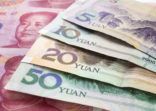As China makes a step toward a broader opening of its bond market to foreign investors by announcing the launch of Bond Connect, FSA looked at China bond mutual funds available to investors in Hong Kong.
The onshore bond mutual fund sector has more than quadrupled since June 2015, when it took off and surpassed for the first time the size of the offshore RMB bond funds.
Onshore China bond funds, available to Chinese investors, had RMB1.32tr ($188.4bn) in AUM at the end of December 2016, the latest date for which Morningstar data are available.
Globally, China bond funds listed outside of the mainland and investing in offshore RMB bonds had $2.26bn in assets under management at the end of April, according to Morningstar.
Assets under management in China debt mutual funds

Data: Morningstar, in renminbi
While many funds available for sale in Hong Kong invest in offshore renminbi and dim sum bonds, some use the Qualified Foreign Institutional Investor (QFII) scheme and its renminbi equivalent (RQFII) to invest in individual onshore bonds.
Dim sum bonds are renminbi-denominated bonds issued outside mainland China, mostly in Hong Kong. The QFII and RQFII schemes allow direct investing in securities in the mainland within the limit of quota assigned to each approved institution. The new Bond Connect is designed to make access to onshore bonds even easier.
The top three best performing funds investing in onshore debt through the RQFII scheme, were:
| 1-yr return | 3-yr return | |
| E Fund Mgmt (HK) RMB Fixed Income Fund | -4.97% | 3.72% |
| CSI RMB Income Fund | -5.59% | 1.34% |
| Hang Seng Mainland China Bond | -5.89% | 1.24% |
Data: FE. Funds available to Hong Kong investors. Returns in US dollars, as of 17 May 2017
For comparison, the top performing dim sum bond funds are:
| 1-yr return | 3-yr return | |
| BOCHK All Weather China High Yield Bond Fund | 5.71% | 3.82% |
| Ping An of China RMB Bond Fund | 1.10% | 2.01% |
| Ping An of China RMB Bond Fund | 1.32% | 1.96% |
Data: FE, returns in US dollars, as of 17 May 2017
FSA noticed that dim sum bond funds outperformed onshore bond funds within the last 12 months. One can see it clearly in the following chart, when the red-coloured dim sum-bond funds rallied while the blue-coloured onshore bond funds moved sideways. FSA thinks that this may be related to deleveraging efforts in China, impacting local corporate bond valuation.
Three-year performance of top China bond funds available in Hong Kong.
(Red: dim sum bond funds, Blue: onshore bond funds)

All fund NAVs have been converted to US dollars. Note that funds in this chart may be denominated in currencies other than the US dollar.
On the other hand, the worst performer was CMS China Opportunities Fund, which lost 6.07% annualised over the last three years and 18.4% within the last 12 months. The fund uses QFII and RQFII quota to invest in debt in China.
Da Cheng China RMB Fixed Income Fund, also investing in onshore debt, lost 3.33% annualised over the last three years, and 10.4% within the last 12 months.














